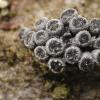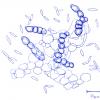
18-12-2025 17:23
 Bruno Coué
Bruno Coué
Bonjour,je serais heureux d'avoir votre avis sur c

18-12-2025 21:17
Pol DebaenstThe identification took me to Byssonectria deformi

18-12-2025 18:07
Margot en Geert VullingsThese plumes were found on rotten wood.They strong

17-12-2025 18:35
 Michel Hairaud
Michel Hairaud
Bonjour à tous/Hi to everyone I am passing along

15-12-2025 15:48
 Danny Newman
Danny Newman
Melanospora cf. lagenaria on old, rotting, fallen

15-12-2025 15:54
 Johan Boonefaes
Johan Boonefaes
Unknown anamorph found on the ground in coastal sa

15-12-2025 21:11
 Hardware Tony
Hardware Tony
Small clavate hairs, negative croziers and IKI bb

15-12-2025 07:09
 Danny Newman
Danny Newman
indet. Rutstroemiaceae sp. on unk. fallen leavesMc
Clusters of small fungi on bark of Alnus
Dmitry Gavryushin,
21-12-2006 18:36
Dmitry Gavryushin,
21-12-2006 18:37
Dmitry Gavryushin,
21-12-2006 18:38
Dmitry Gavryushin,
21-12-2006 18:38
Jacques Trimbach,
21-12-2006 21:15
Re:Clusters of small fungi on bark of Alnus
cf. Tympanis alnea
Dmitry Gavryushin,
21-12-2006 21:33
Re:Clusters of small fungi on bark of Alnus
Many thanks Jacques, I think you are quite right. I have also found out that it occurs on Duschekia fruticosa (Betulaceae) in Taimyr Peninsula (Checklist of fungi and lichenicolous fungi of the Russian Arctic, http://www.binran.ru/infsys/ra_fun/ ).
Hans-Otto Baral,
21-12-2006 22:42

Re:Clusters of small fungi on bark of Alnus
Yes that´s a Tympanis. In the case you find living asci (in a section) then you see that the conidia are aggregated in 8 roundish balls in the upper half of the ascus, and so they are ejected. But when you kill the asci then this peculiar arrangement is completely distorted and the conidia fill the whole ascus.
Zotto
Zotto
Dmitry Gavryushin,
22-12-2006 08:40
Re:Clusters of small fungi on bark of Alnus
Thanks a lot for your comment Zotto. It's said in Nordic Macromycetes that there's another sp. on Alnus, T. hysterioides, but I think it would be difficult to say whether it's T. alnea or T. hysterioides.
Hans-Otto Baral,
22-12-2006 22:18

Re:Clusters of small fungi on bark of Alnus
Tympanis is a very difficult genus. The best paper I know is that from Ouelette & Pirozynski. To identify species it is necessary to study the ascospores from which the conidia emerge (septation, germ tubes), which are rather difficult to see within the premature asci - when asci are dead then only by staining.




